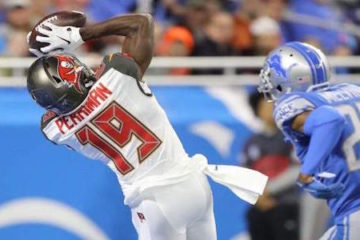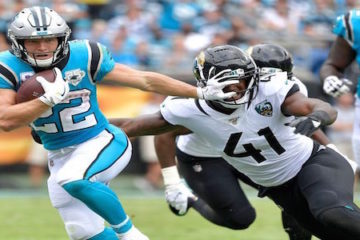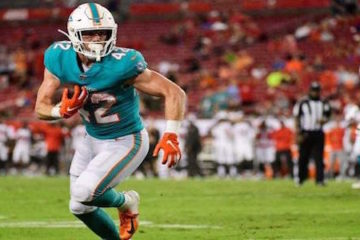2012 Fantasy Baseball, Advanced Metrics Simplified: Getting to know wRC+
Fortunately, there are metrics that do essentially just that. The best of the bunch is wRC+. It stems from plain old wRC which tells us how many runs a player created for his team in one simple metric. wRC+ tells us how that player’s run creation compares to league average. League average is 100. Every point over 100 is equal to one percentage point better than league average. For example, if a player’s wRC+ is 110, then he created 10% more runs than league average. And if a player’s wRC+ is 90 then he created 10% fewer runs than league average.
wRC+ also happens to be park and league adjusted. Therefore, it allows us to compare players from all years and all locations on an even plane. As you can see, this statistic is purely an all-encompassing measure of a player’s offensive contribution.
If there is a flaw in wRC+, it is that it doesn’t account for playing time. A stat like WAR is one where a player accumulates his WAR total as he accumulates at-bats. But wRC+ only compares a player’s production to league average for the time period in which that production was achieved. For example, Brett Lawrie’s incredible 171 PA ranked 6th in wRC+ last year but only 98th in WAR.
But this “flaw” can be used to the fantasy player’s advantage. wRC+ can help us identify players who provide above average offensive production that, with extra at-bats, could be undervalued. Here are five guys that are likely on your waiver wire that should be monitored early in the season as potential breakout candidates.
John Mayberry, Philadelphia Phillies (10.0% owned)
In just under 300 plate appearances last year, Mayberry posted a well above-average wRC+ of 133. You have to be careful when searching for potential breakouts based on small-sample wRC+ because small samples are often susceptible to extreme BABIPs. For example, Alejandro de Aza posted a 151 wRC+ in 171 PA last year, but the main reason for that was a .404 BABIP. But Mayberry’s 133 wRC+ was produced with a very normal .293 BABIP.
Mayberry begins the season as the Phillies’ starting left fielder, and Charlie Manuel has even said he views Mayberry as a 500+ PA type of player. Moreover, Mayberry is out of options, so at the very least he’s likely with the Phillies all season. Assuming Mayberry gets off to an at least decent start, he shouldn’t have any trouble getting to 500 PA.
You could speculate that Mayberry’s production will decrease in an everyday role as opposed to a more platoon-based role, but he actually held his own against righties last year. A .250 average with seven homeruns and a 10% walk rate are good enough to keep the wRC+ well above 100 even if he doesn’t reach 133 again.
Nolan Reimold, Baltimore Orioles (0.4% owned)
As we learned in the Mayberry analysis, we’re really looking to check three boxes when mining the wRC+ list for breakout candidates. The first box is solid production in limited time last season. Reimold posted a respectable 112 wRC+ in just over 300 PA last year. Check! The second box is the solid production was not a result of extreme good fortune. If anything, Reimold was slightly unlucky with a .264 BABIP last year. Check! And the third box is a projected increase in plate appearances this year. Like Mayberry, Reimold is out of options. He’s also slated to hit leadoff (maybe not the best idea) and has little competition for his outfield spot. Check!
Ryan Doumit, Minnesota Twins (3.1% owned)
Things are a bit crowded in Minnesota at the positions you’d expect Doumit to play. Justin Morneau is sure to spend most of his time avoiding concussion symptoms and DH’ing. Joe Mauer will catch and play a fair amount of first base to keep his legs fresh. And Chris Parmelee may play some first when Mauer catches. But right field is pretty vacant and Parmelee may not deliver much from first. So Doumit should be able to find the at-bats at a variety of positions.
And so there is some potential value in the guy who posted a 129 wRC+ in 236 PA last year. Admittedly, his .331 BABIP is a concern, but it came along with a .303 batting average. So even if his BABIP dips back to normal levels, Doumit could still hit .270+. And a guy with catcher eligibility who can hit .270 with 15+ homers will always have some value.
Shelly Duncan, Cleveland Indians (0.3% owned)
We’re going a little deeper down the wire here, but Duncan easily checks all three of our boxes. First, he had a very nice 118 wRC+ in 247 PA last year. And his BABIP was a very normal .297. Most importantly, Duncan figures to get significantly more at-bats than he has had in any prior season. He too is out of options and faces little to no competition for his spot in the outfield. At least until Grady Sizemore returns, which could very well never happen. He won’t hit for much average (.250-ish), but he might have 20 homer pop in him if he gets 500+ PA.
Chris Snyder, Houston Astros (0.1% owned)
We’re officially so far down the wire that we’ve crossed into single league territory. So for NL-only players, consider Snyder as an option. His wRC+ was 115 over 119 PA last season. A very small sample to be sure, but the sample should be much larger this year barring injury. Jason Castro is no safe bet to stay healthy himself, so Snyder could see 350+ PA this season. If he gets to the plate that often, there is double digit homer potential there worth considering, even if it comes with a sub-.250 average.
Written by Brett Talley exclusively for thefantasyfix.com. Brett is a law student in Dallas who proposes we call wRC+ “work up” when actually speaking the term. You can tell him to get a better idea and/or ask him for fantasy advice on Twitter @therealTAL.






